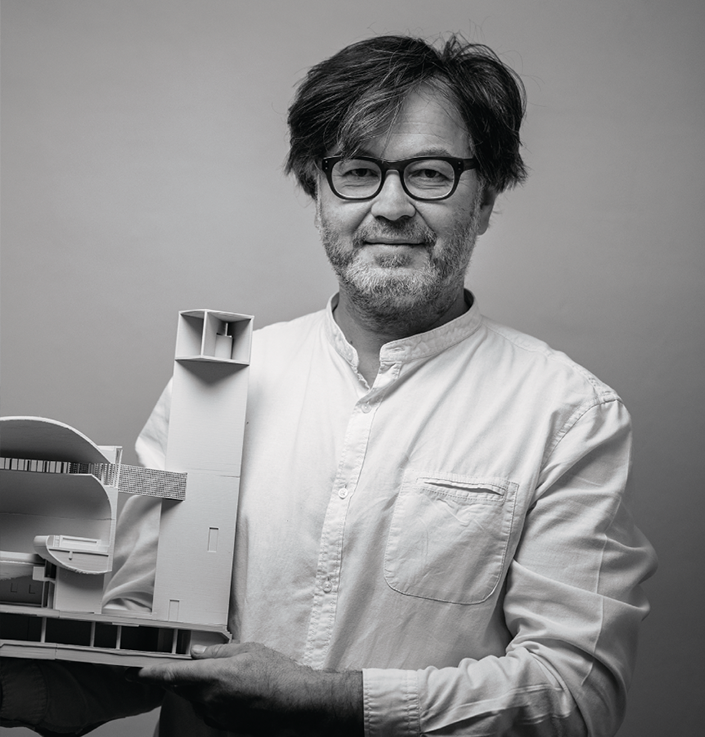Interview with Marek Jan Štěpán, founder and director of Atelier Štěpán about his authentic architectural design
We share a common cultural space in Central Europe with the Czech Republic, and we are also close in terms of origin, language and artistic sensibility. It is therefore not unusual that Jože Plečnik created one of the highlights of his remarkable oeuvre in Prague at Hradčany for President Masaryk, and that he befriended and collaborated with many Czech architects there. Czech architectural production is still very much alive and interesting today, but unfortunately not enough is known about it. That is why I have chosen from among the recent production of Czech architecture an artist who stands out both for his subject matter, his approach and for the particular sensibility of his works. Marek Štěpán works together with his wife Vanda and collaborators in Atelier Štěpán, and together they have produced a large number of diverse works, both in scale and content. But he is best known for his sacred architecture, which he has been working on in depth for almost 30 years. He has developed a very subtle relationship with the subject, and has also developed a distinctive architectural expression through it, which can be traced from large churches to small designs and artistic objects. Marek Jan Štěpán developed authentic architectural design. He consciously tries to create a bridge between tradition and modernity, not through various con- temporary trends, but by turning to the inner truth. Marek Štěpán is also a teacher at the Faculty of Architecture in Brno and the author of a manifesto on “decorstructuralism”. In 2016 he founded the Sacred Space Laboratory. Their daughter Magdalena Štěpán has also set out on the path of architecture and, as a member of the younger generation, is in her own way continuing the architectural tradition of her parents.
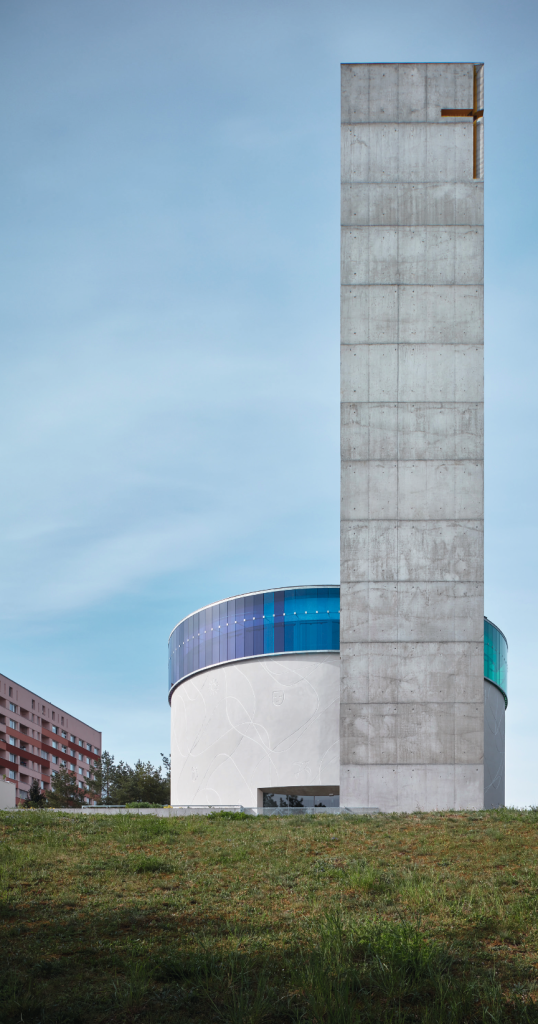
What first interested you in the field of architecture?
Specific people and experiences. Conversations and walks with my father, a conversation with a yogi in the attic of a Beskydy cottage, debates with a monk who had just returned from prison. And one house with a wall of glass bricks, into which the light shined. I was fascinated. So I started my journey, and I’m still on my way.
Can you talk about a specific experience that has shaped you in a particular way, and influenced your work ?
I can tell you a story: Vanda and I had just completed construction of our house in Vranov. Since the process of building it took up almost all our time, I hadn’t devoted my- self to architectural work and we had nothing to do. I was sitting in our studio with my feet on the table, penniless and looking out the window. I was deciding what to do when the phone rang and someone said: “This is the Office of the President of the Republic.” I was sure it was my friend Martin and that he was joking. The call continued and the voice on the other end suggested a meeting with the president’s wife next Tuesday for possible cooperation. By now I was almost certain that Martin was joking. I wanted to buy some time, so I replied, “Wait a minute, I’ll look in my diary.” Of course I was free that day, and it turned out that a limousine really was waiting for me at Prague Castle on Tuesday, and took me to the castle in Lán, where I had a lunch of boiled beef with car- rots with Mrs. Klaus. Soon after, we started a six-year collaboration with the president’s office, where I was an adviser on architectural matters. Well, it wasn’t Martin and it wasn’t a joke – I was starting a new stage of work.
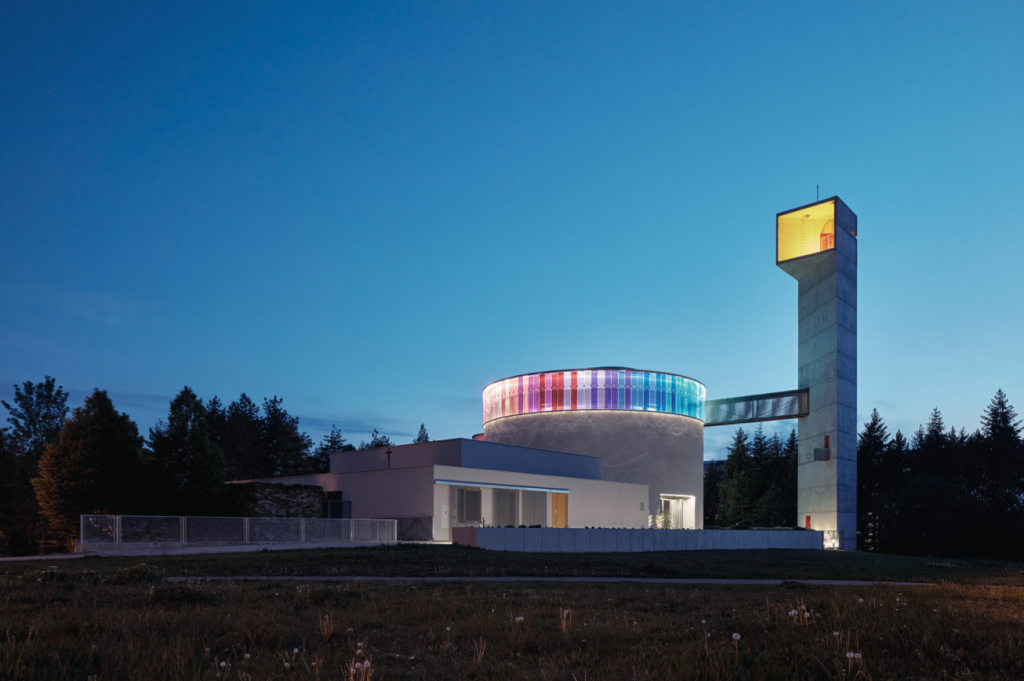
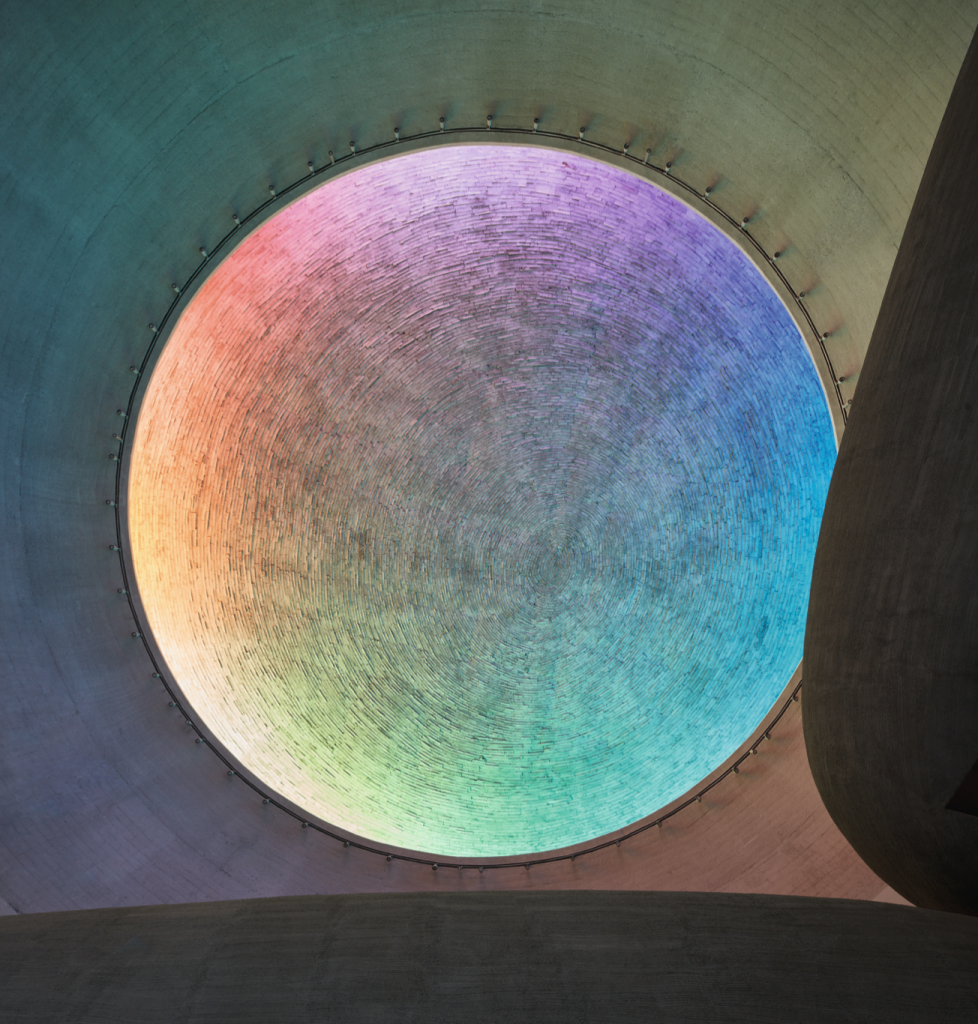
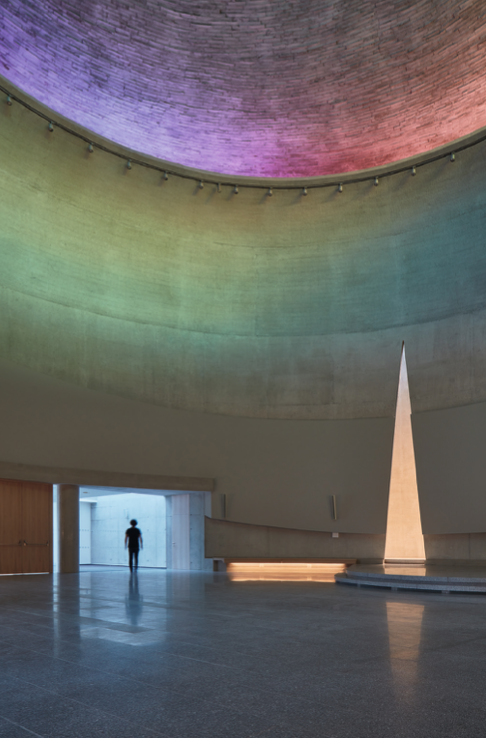
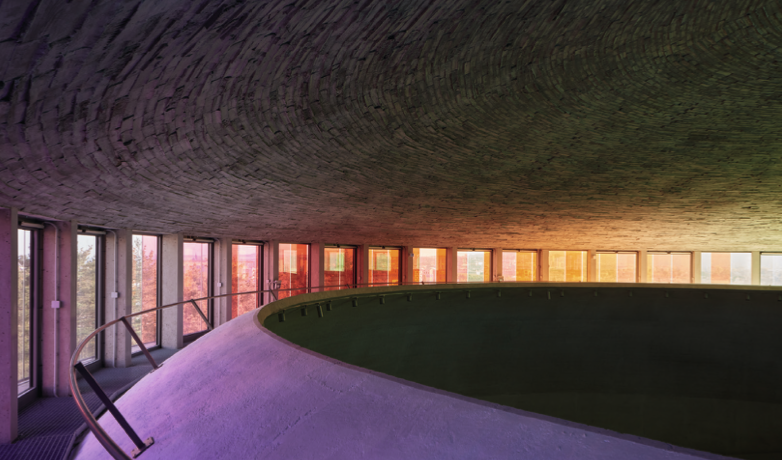
Church of Beatified Restituta, Brno – Lesná, 2017-20 Author: Marek Jan Štěpán, co-authors: Vanda Štěpánová, František Brychta, Jan Vodička, Marin Kopecký Atelier Štěpán. Photo: archive of Atelier Štěpán, Boys Play Nice
How important is the physical, cultural, and spiritual context in which you live to your work, and how is it reflected in it?
The physical, cultural and spiritual context is extremely important to our work. It’s the mycelium from which our mushroom grows. The physical contact with a building, the fact that I can touch it, feel the concrete, walk on different floors, experience its proportions and scales is extremely important. They form a range of experiences which make the base of my work. It is related to phenomenology and intuition. I take the cultural context as given by the fact that I was born in Central Europe and I am magically connected to it, I know it. It is a part of an ancient Christian culture with values close to us, a legal system and human dignity. This is related to the spiritual values that go beyond us and are hard to describe.
How do you understand the relationship between the universal and the local in your architectural projects?
I don’t deal with this relationship. I think I work very locally, with local materials, but on universal – not international – principles.
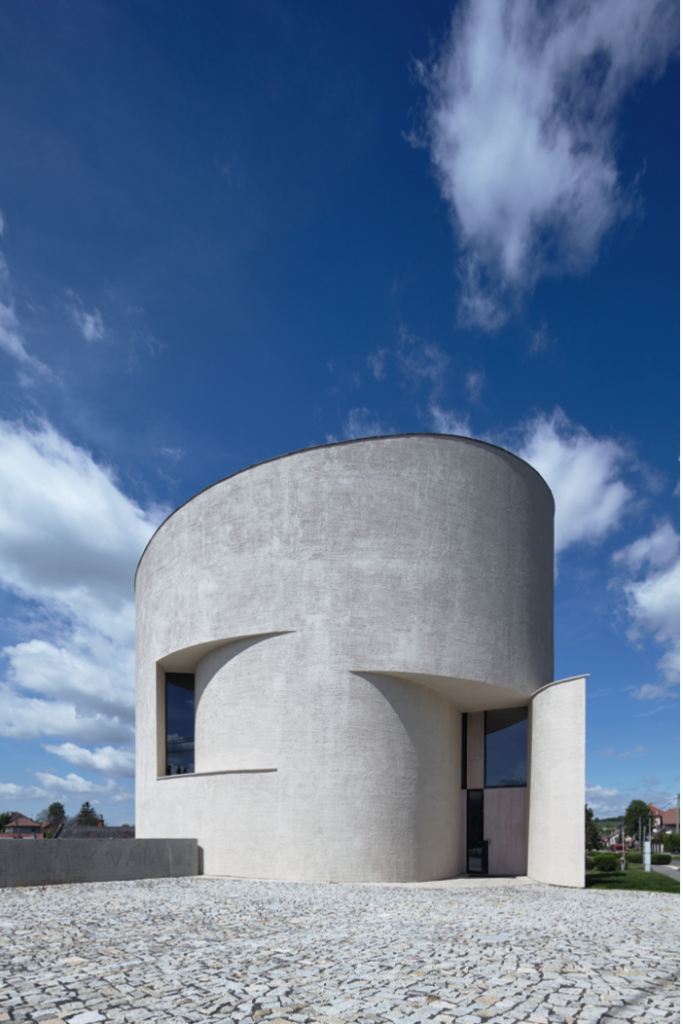
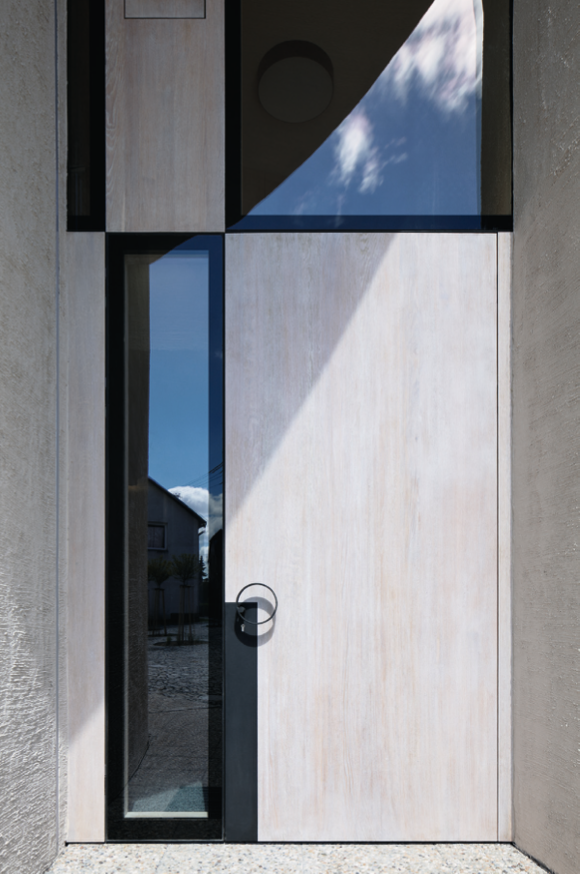
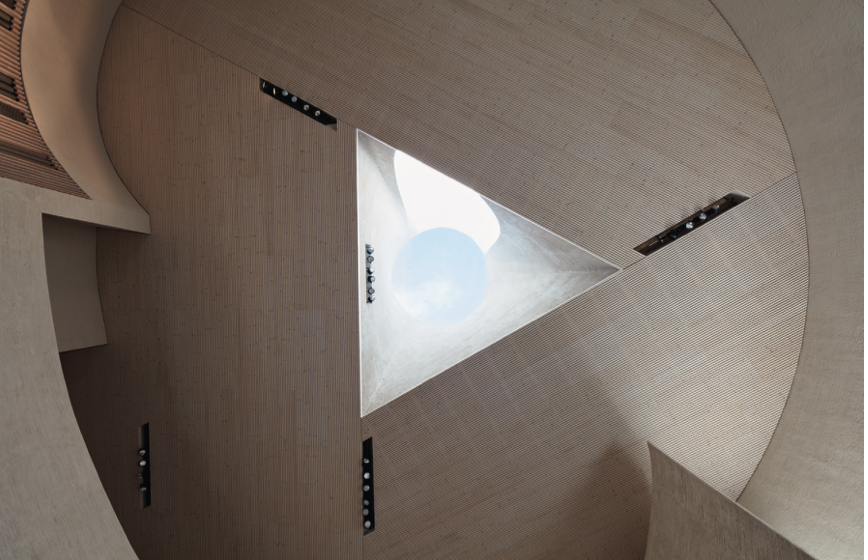
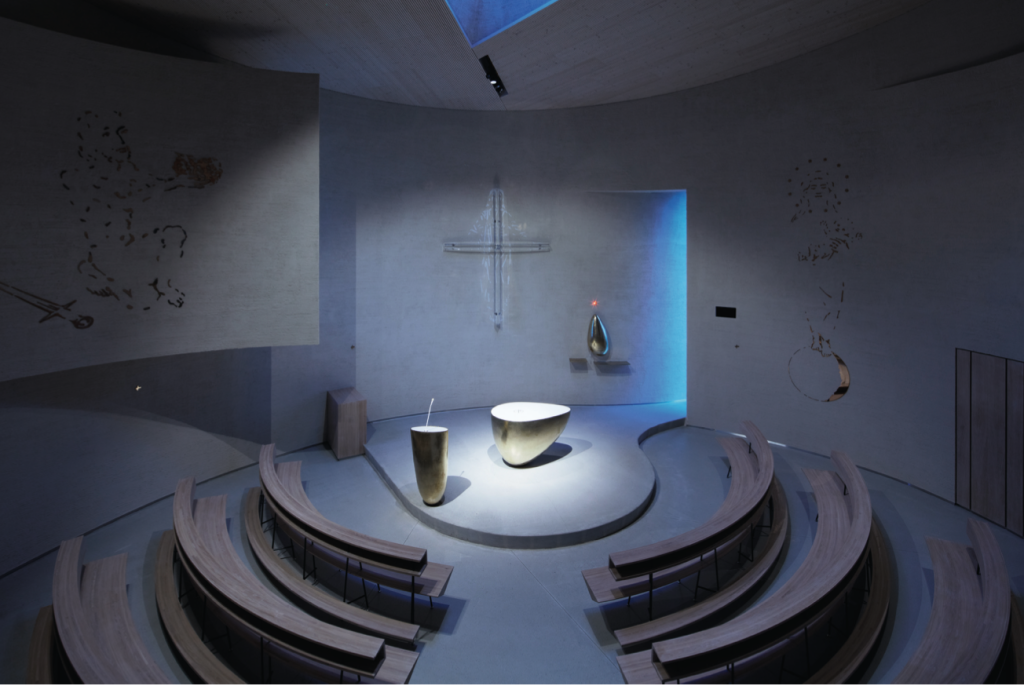
Marek Jan Štěpán authentic architectural design of the Church of St Wenceslas, Sazovice, 2015 – 2017. Author: Marek Jan Štěpán, co-authors: František Brychta, Jan Vodička, Vanda Štěpánová, Jan Martínek, Tomáš Jurák, Hana Myšková; Atelier Štěpán. Photo: archive of Atelier Štěpán, Boys Play Nice
How is the work done in your atelier?
Our studio is a small family business. I founded it with my wife Vanda in 1997 in Brno. Now there are six and a half of us. Vanda and I are partners and the authors of buildings. Both of us work on our own projects and give each other advice on request. We have other, mainly young creative people and a wide range of external collaborators in our team. Now our daughter Magdalena has also entered the field of architecture.
Which project are you most deeply involved in at the moment?
Currently, I’m most interested in the project of the museum of mechanical nativity scenes in Svitavy. It’s partially a reconstruction of two older buildings, one of which is the Ottendorfer House. Between the two of us, we are designing a new entrance to the museum and also to the library.
What is the relationship in your work between research and analysis, and the creative part of the design process?
Architecture has its conscious and subconscious parts. Analysis belongs to the conscious, rational realm. It’s good for getting to know a topic or a place, to introduce us to the story. Nowadays, however, analysis is overrated, sometimes almost worshipped. I belong to a generation that introduced analysis to teaching and practice. But it’s important to be careful, as far better than any analysis is refined intuition and visits to reference buildings. So I prefer to explore the architecture of the subconsciousness. I consider the theory of architecture to be important. I myself once established – a little clumsily – a theory about the decor of structures, so-called deconstruction.
You have realised a lot of religious buildings: could you describe the relationship between the sacred and profane in your life and work? Do you believe our world needs more spirituality?
Humanity’s spirituality and religiosity meet an age-old need. This need evolves over time, but it still has one thing in common. It refers to things that transcend us, that are beyond our everyday perception. We constantly focus on them and try to find a language of material buildings that corresponds to the current perception of the world. Secular matters refer to everyday, common situations, and the sacral is defined. A sacral place is a break in space, it is, in the words of philosophers, ganz andere, it is a cosmisation of places.
What’s your advice to young people entering the field of architecture?
Forget panic and despair, and look for new solutions instead. Be optimistic, believe in your talents and strengths, have hope for your future. And don’t listen to me too much.
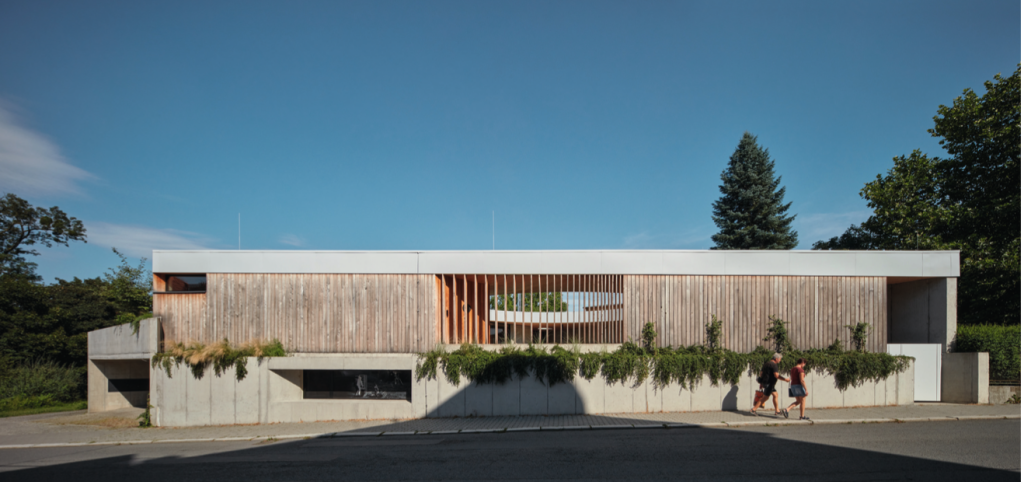
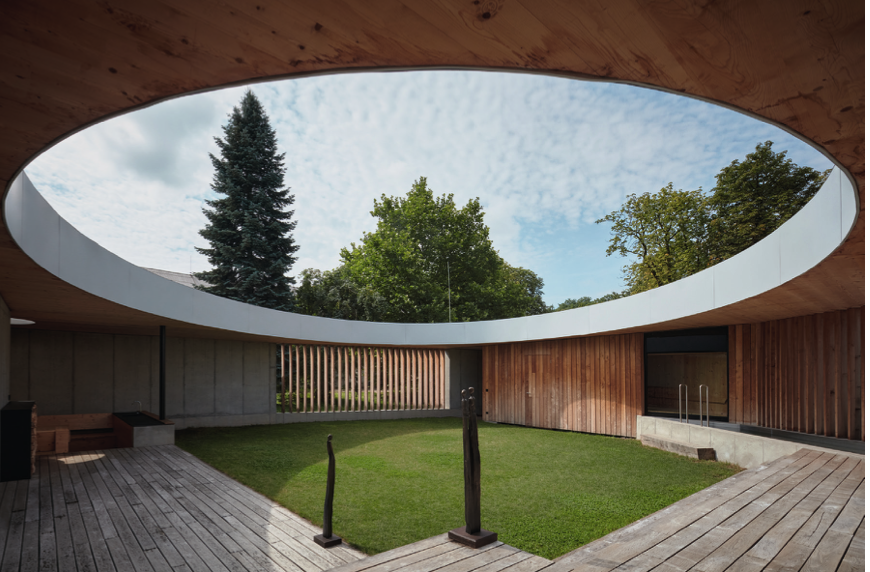
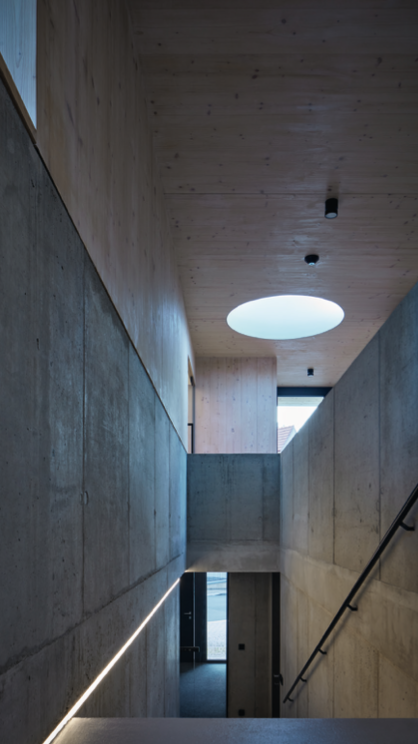
Atrium house by Marek Jan Štěpán with authentic architectural design, Nový Jičín, 2015 – 2020. Authors: Marek Jan Štěpán, co-authors: František Brychta, Lukáš Svoboda, Tomáš Jurák; Atelier Štěpán. Photo: archive of Atelier Štěpán, Boys Play Nice
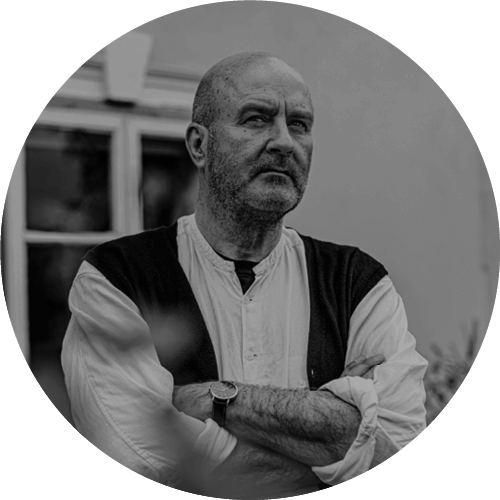
Written by: Aleksander Ostan
An architect and urban planner, teaches at Ljubljana’s Faculty of Architecture. He co-runs Atelje Ostan Pavlin, focusing on sustainable, holistic design. Ostan is active internationally, conducts workshops, lectures, and writes, with numerous awards.


